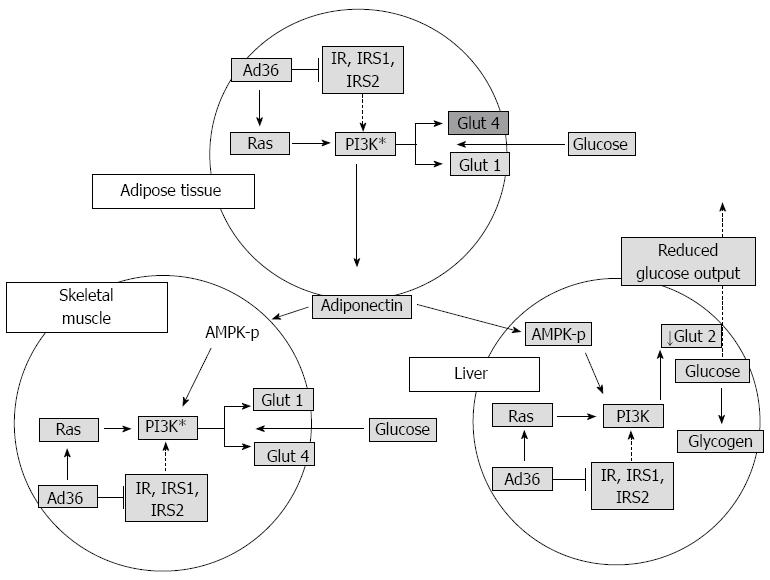Copyright
©2014 Baishideng Publishing Group Inc.
World J Gastroenterol. Oct 28, 2014; 20(40): 14706-14716
Published online Oct 28, 2014. doi: 10.3748/wjg.v20.i40.14706
Published online Oct 28, 2014. doi: 10.3748/wjg.v20.i40.14706
Figure 7 Working model to explain the antidiabetic effect of ADV36.
Overall, data from suggest that, in adipose tissue, skeletal muscle, and liver of mice, ADV36 downregulates insulin signaling yet upregulates the Ras-PI3K pathway, which upregulates Glut1 and Glut4 in skeletal muscle and adipose tissue and downregulates Glut2 in liver. Furthermore, ADV36 increases adiponectin, which may activate AMPK. Collectively, this leads to greater glucose uptake by adipose tissue and skeletal muscle and reduces hepatic glucose release, which may contribute to ADV36-induced improvement in systemic glycemic control[53]. Modified from Krishnapuram et al[54].
- Citation: Trovato FM, Catalano D, Garozzo A, Martines GF, Pirri C, Trovato GM. ADV36 adipogenic adenovirus in human liver disease. World J Gastroenterol 2014; 20(40): 14706-14716
- URL: https://www.wjgnet.com/1007-9327/full/v20/i40/14706.htm
- DOI: https://dx.doi.org/10.3748/wjg.v20.i40.14706









